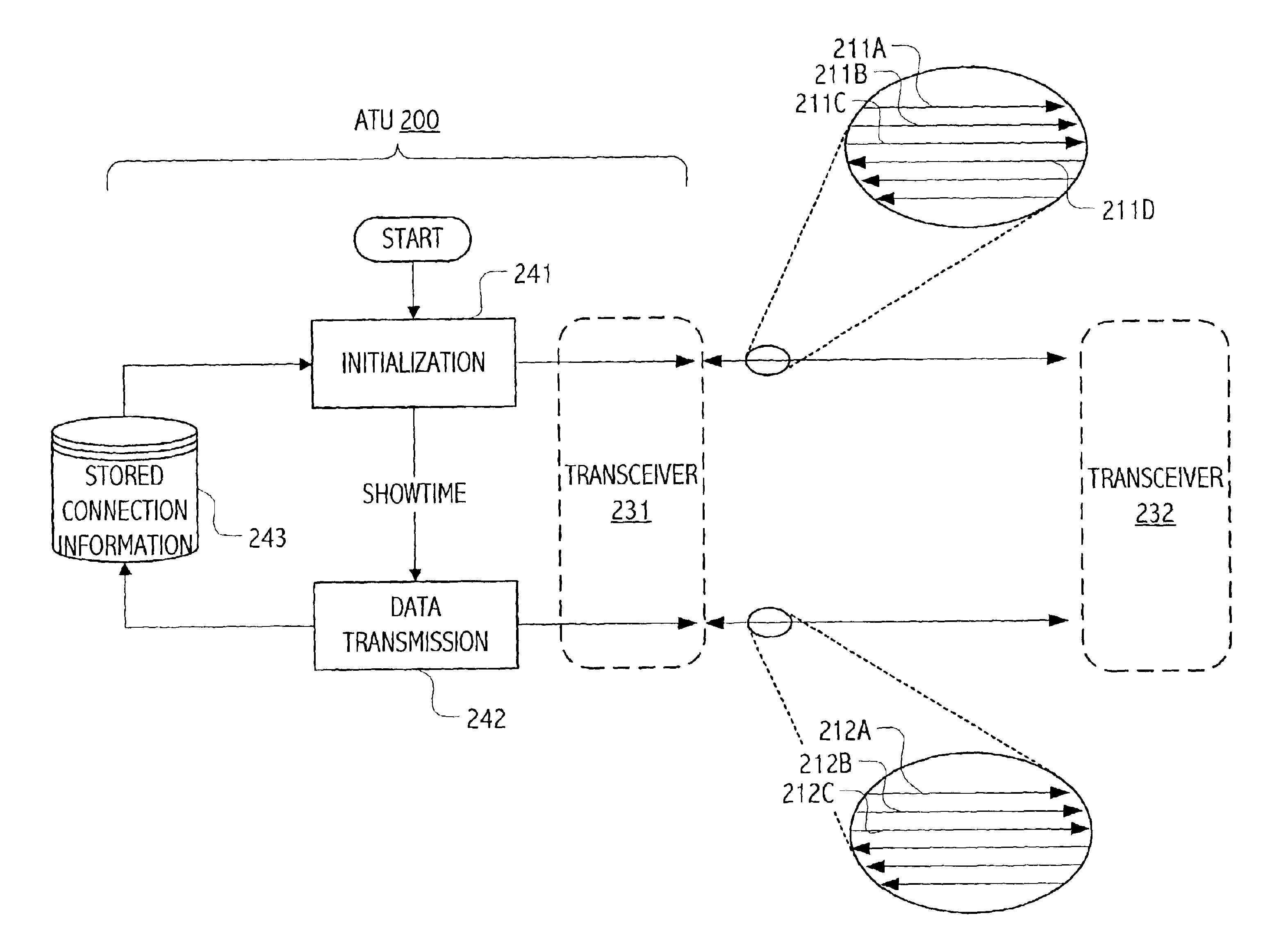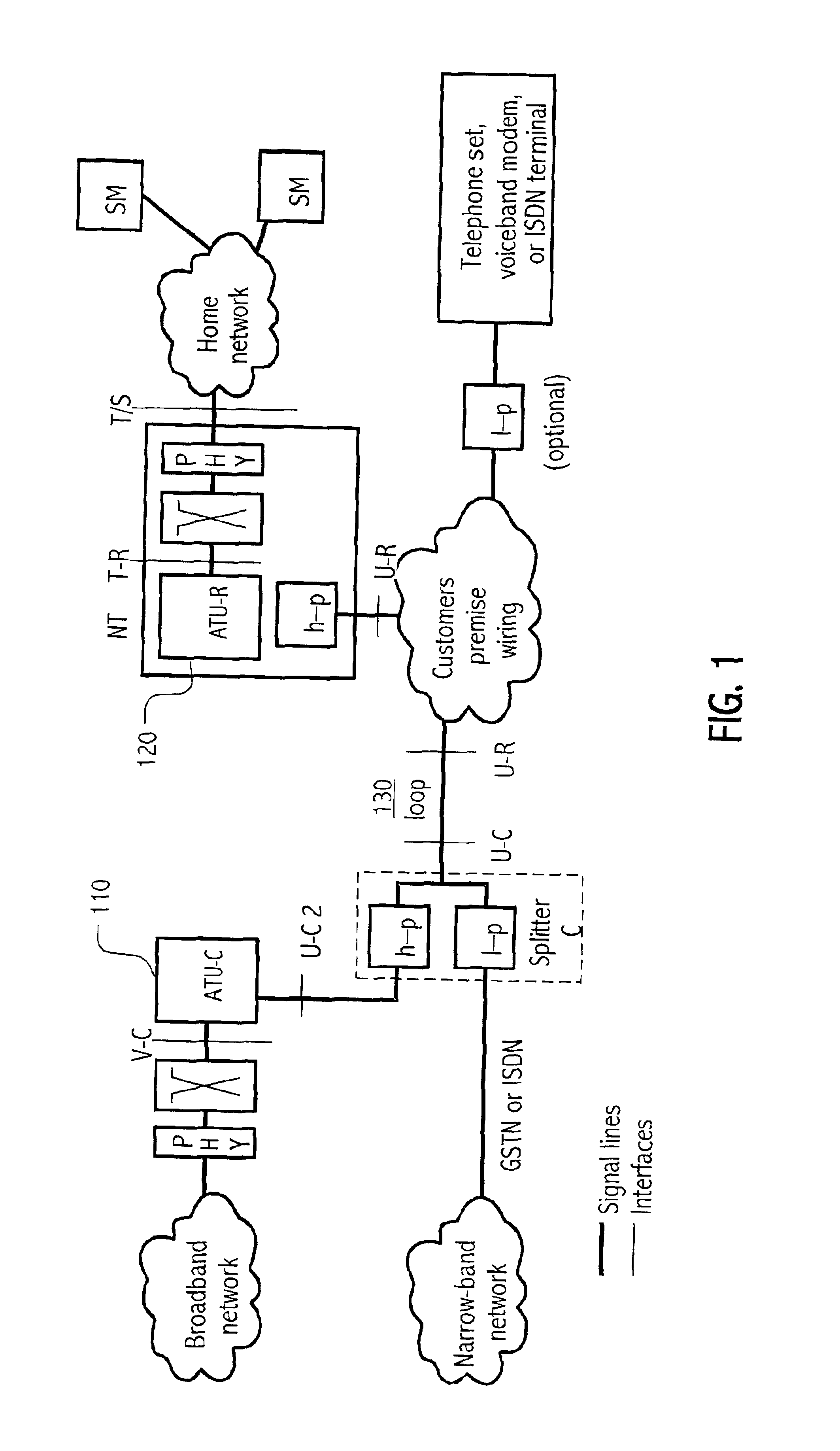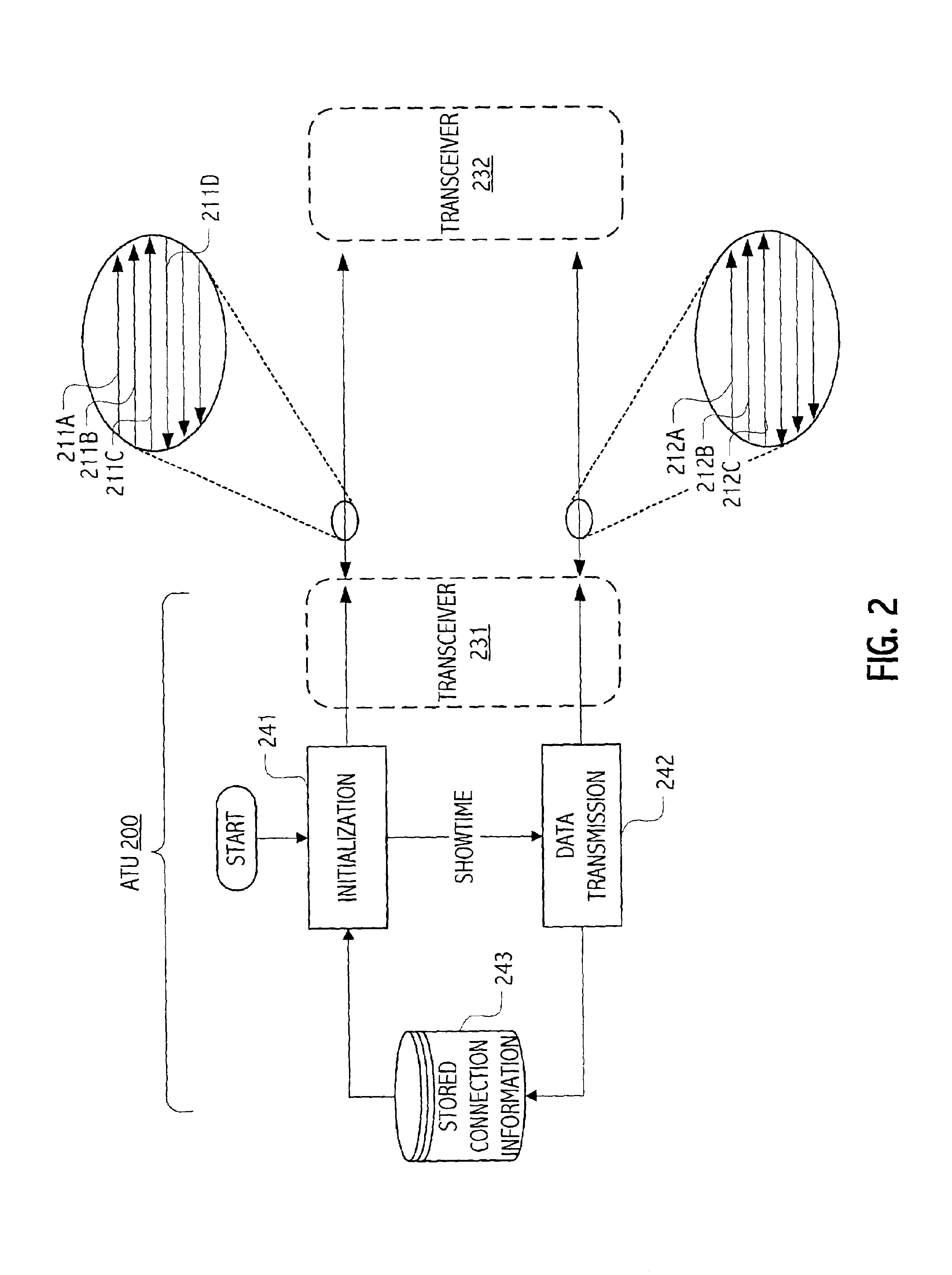Selectable training signals based on stored previous connection information for DMT-based system
a training signal and dmt-based system technology, applied in the field of data communication, can solve the problems of unnecessarily high echoes, degrade the performance in the receiving direction, and the tone in the training signal does not contribute to actual data transmission performance, so as to reduce the use of extra tones, improve the receiver performance, and reduce local echoes.
- Summary
- Abstract
- Description
- Claims
- Application Information
AI Technical Summary
Benefits of technology
Problems solved by technology
Method used
Image
Examples
Embodiment Construction
)
[0022]In a discrete multitone modulation system, local echoes generated from transmission in one direction can be a major impairment for receive performance in the other direction, especially in the cases of long loops. At the receiving end, the local echoes are usually much larger than the received signal from the other end. As a result, the gain of automatic gain control (AGC) is set mainly by local echoes, which puts more stringent requirements on the receiving ADC in the case of long loops. Although training signals can include all the tones or a fixed range of tones in the band, some of those tones will typically not be used for data transmission. As a result, use of a full set of tones in the training signal can result in unnecessarily high local echoes and performance degradation in the receiving direction. Accordingly, the techniques described herein allow the set of tones in a training signal to be reduced in correspondence with tones actually employed in one or more recen...
PUM
 Login to View More
Login to View More Abstract
Description
Claims
Application Information
 Login to View More
Login to View More - R&D
- Intellectual Property
- Life Sciences
- Materials
- Tech Scout
- Unparalleled Data Quality
- Higher Quality Content
- 60% Fewer Hallucinations
Browse by: Latest US Patents, China's latest patents, Technical Efficacy Thesaurus, Application Domain, Technology Topic, Popular Technical Reports.
© 2025 PatSnap. All rights reserved.Legal|Privacy policy|Modern Slavery Act Transparency Statement|Sitemap|About US| Contact US: help@patsnap.com



